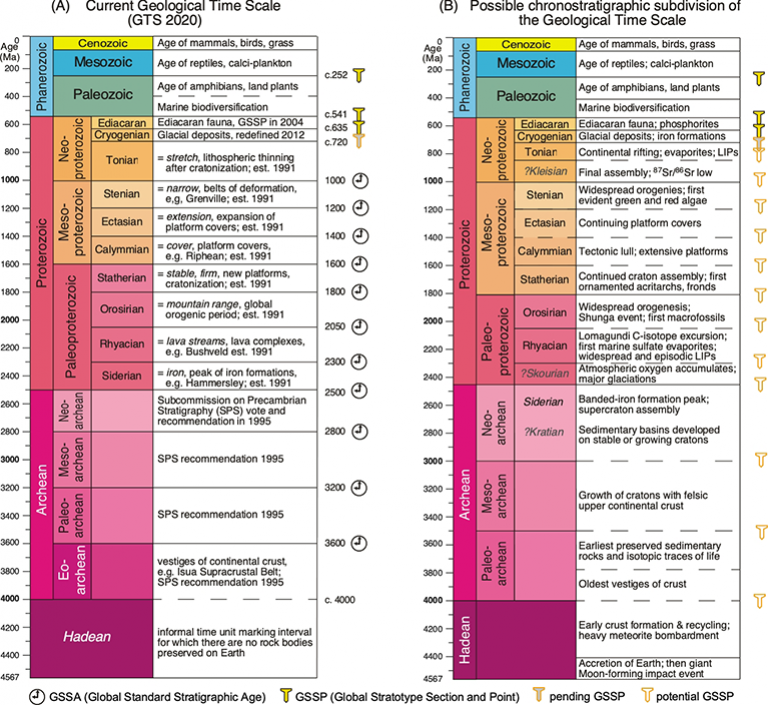A template for an improved rock-based subdivision of the pre-Cryogenian timescale.
3 August 2021
A working group of the International Commission on Stratigraphy was setup with Prof Graham Shields as chair to see how the first 85% of Earth history can best be subdivided so that the names and ages of periods, eras and eons match known events recorded in the rock record.

Two years ago, a working group of the International Commission on Stratigraphy was set up to discuss how the first 85% of Earth history can best be subdivided so that the names and ages of periods, eras and eons match events from the rock record. The hope is that this will allow more intuitive appreciation of our planet’s formative years for future scientists, students and the general public. Earlier this month we published the results as an open access paper (link below), in which we propose new periods: the Skourian Period, after the Greek word for rust, for the interval between about 2.45 and 2.3 billion years ago; and the Kleisian Period, for the tectonic “closure” that resulted in the formation of supercontinent Rodinia between about 1.0 and 0.85 billion years ago. The figure shows both the old timescale and the new version that we are now proposing formally to the International Commission on Stratigraphy for voting and possible ratification.
The abstract of the paper:
The geological timescale before 720 Ma uses rounded absolute ages rather than specific events recorded in rocks to subdivide time. This has led increasingly to mismatches between subdivisions and the features for which they were named. Here we review the formal processes that led to the current timescale, outline rock-based concepts that could be used to subdivide pre-Cryogenian time and propose revisions. An appraisal of the Precambrian rock record confirms that purely chronostratigraphic subdivision would require only modest deviation from current chronometric boundaries, removal of which could be expedited by establishing event-based concepts and provisional, approximate ages for eon-, era- and period-level subdivisions. Our review leads to the following conclusions: (1) the current informal four-fold Archean subdivision should be simplified to a tripartite scheme, pending more detailed analysis, and (2) an improved rock-based Proterozoic Eon might comprise a Paleoproterozoic Era with three periods (early Paleoproterozoic or Skourian, Rhyacian, Orosirian), Mesoproterozoic Era with four periods (Statherian, Calymmian, Ectasian, Stenian) and a Neoproterozoic Era with four periods ( pre-Tonian or Kleisian, Tonian, Cryogenian and Ediacaran). These proposals stem from a wide community and could be used to guide future development of the pre-Cryogenian timescale by international bodies.
Links:
- A template for an improved rock-based subdivision of the pre-Cryogenian timescale. Graham A. Shields, Robin A. Strachan et all, Journal of the Geological Society(2021-07)
- Prof Graham Shield's academic profile
 Close
Close

